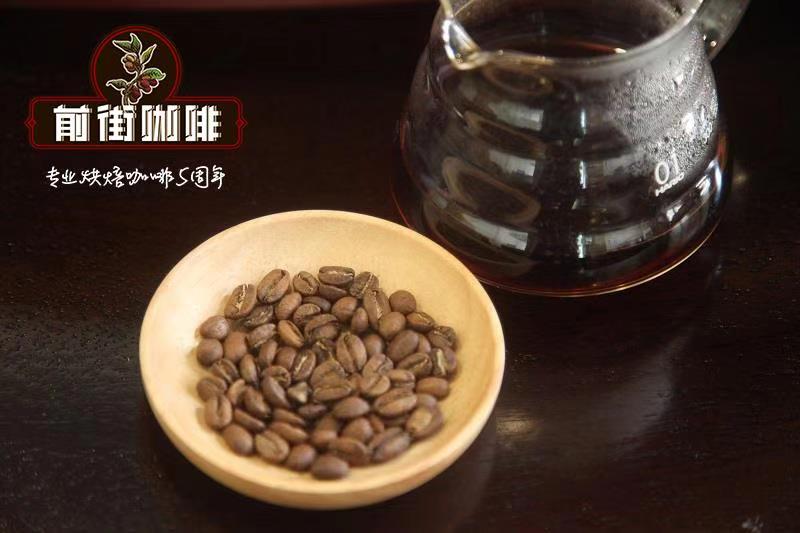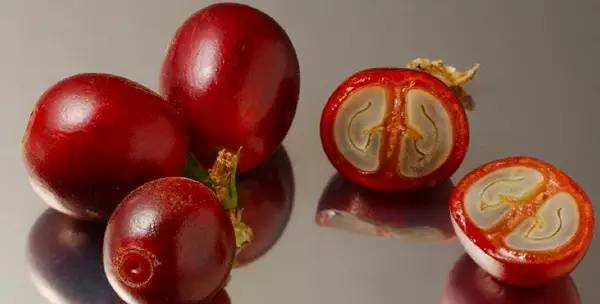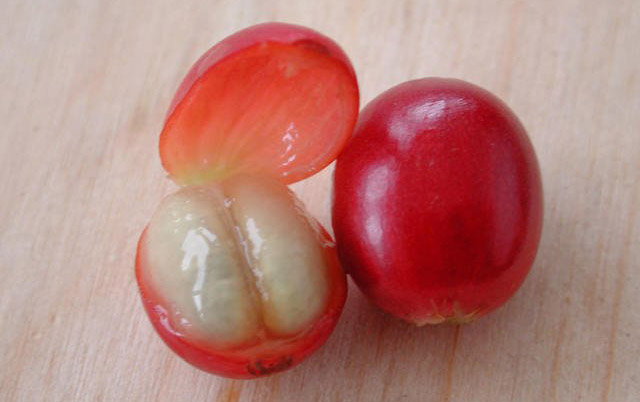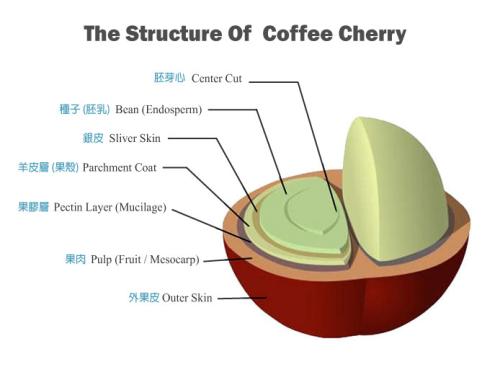Coffee internal structure layer decomposition, understand the coffee internal structure to give coffee flavor conditions!

Professional coffee knowledge exchange more coffee bean information please follow the coffee workshop (Wechat official account cafe_style)
Coffee tree is a perennial evergreen shrub or small tree of Rubiaceae. The mature fruit of coffee tree is called coffee cherry because it is similar to cherry. What I want to share this time is not the shepherd's story of coffee, nor the three major varieties of coffee, but the knowledge about the internal structure of coffee cherries.

The structure of coffee is divided into exocarp-pulp-pectin layer-endocarp-silver peel-endosperm, and the coffee we drink is the germ, that is, coffee seeds, and the rest will be removed in the process of treatment. For example, the sun treatment will dry the coffee fruit directly in the sun, and then peel off the coffee fruit, while the water washing method first removes the skin and pulp, eliminates the stickiness of the colloid with the help of fermentation, then soaks the pectin in the fermentation pool, and then takes it to dry. so this is also the reason why the flavor of the two treatments is different, the sun alcohol is thick and fermented, and the washing acid is clean and bright.

Then we will analyze the structure of coffee cherries layer by layer.
1. Exocarp
That is, the outermost peel of coffee cherries, most coffee cherries turn red when they are ripe. But some do have different colors. Brazilian yellow bourbon is yellow when it is ripe. Yellow bourbon is a cross between bourbon and other coffee varieties. Pink bourbon ripe fruit is the pink of a young girl's heart, so it is named pink bourbon. It is a mixture of yellow bourbon and red bourbon.
2. Pulp
The pulp is closely connected with the exocarp, just below the exocarp, the coffee cherry pulp is a thin layer. After drying, the sun treatment will remove the pulp and other tissues only when the moisture content reaches 12%, while the water washing treatment will use a peeling machine to remove the peel and pulp within a few hours after the fruit is picked.
3. Pectin layer
The layer below the pulp is the pectin layer, also known as gum. This pectin layer is the source of the sweetness of coffee fruit, and honey treatment is graded according to the number of pectin layers. Coffee cherry pectin is not only high in viscosity, but also high in sugar. Farmers like to call it honey.
4. Endocarp
Under the gum is the endocarp, also known as parchment, which adheres tightly to the pectin layer. Parchment is a shell of cellulose. Parchment is named because when coffee beans are dried, the endocarp wrinkles due to loss of moisture, which looks very similar to parchment, so it is called parchment.
5. Silver skin
The silver skin is attached to the bean surface of the coffee bean, and the coffee bean is tightly wrapped by the silver skin. A thin film is the epidermis left by the development of coffee seeds, which is called silver skin in the industry. The silver skin will also be removed by treatment, whether in the sun or in water. If it is found that the silver skin has not fallen off before shipment, the silver skin will be removed by the process of polishing. The silver skin of the remaining coffee will fall off during the baking process, and there will be residue in the center line after the water-washed beans are roasted, which is characteristic of washed coffee beans and will be mixed with coffee powder when they are ground.
6. Seeds
Finally, there is the seed, the protagonist wrapped under the silver skin, also known as the endosperm, making coffee beans the second most traded commodity in the world only to oil.

This time, we have dissected the structure of coffee cherries layer by layer, and how many layers of substances the coffee beans are coated with, so that we can understand that a coffee bean will be treated differently because of different substances. It is precisely because the methods of removing these coatings are different, so it also creates a different flavor.
END
Important Notice :
前街咖啡 FrontStreet Coffee has moved to new addredd:
FrontStreet Coffee Address: 315,Donghua East Road,GuangZhou
Tel:020 38364473
- Prev
Flavor and taste characteristics and cooking parameters of sunny rose summer coffee beans in Caldas, Colombia
Professional coffee knowledge exchange more coffee bean information please follow the coffee workshop (Wechat official account cafe_style) after drinking the rose summer of Panama, the rose summer of Ethiopia, maybe you can learn about the rose summer of Colombia ~ Qianjie Coffee today to share with you a summer of sun roses from Colombia! C
- Next
I've heard of Panamanian red wine treatment, but have you ever heard of Ethiopian red wine treatment?
Professional coffee knowledge exchange more coffee bean information Please follow the coffee workshop (Wechat official account cafe_style) for many coffee lovers, Ethiopian coffee is simply an incentive to enter the pit, but the coffee produced here is basically washed or tanned, and honey treatment is rare.
Related
- Being chased out of the rain in front of Starbucks?! Store: Sheltering from rain under umbrellas poses a safety hazard
- The white moonlight has changed?! Lucky launches "Big Winter Pear American"
- Hand-brewed coffee three-stage method, high-sweet and universal brewing method to share! What does the high sweet water level of hand-brewed coffee mean?
- What is the difference between raw, refined and full espresso coffee? How to extract espresso and taste good?
- A complete list of coffee bean names and their meanings! What is Yejia Shefi coffee? Where is Mantelin coffee?
- What grade does Arida Manor Kaduai coffee beans belong to? What treatment is Arida ASD slow anaerobic sun exposure?
- The milk tea cup becomes smaller?! Overlord Tea Girl launches a new "Return to Yunnan" series
- Accused of selling counterfeit and high-priced coffee beans! Well-known boutique coffee brand "Oukelao" bowed and apologized!
- How to make espresso dumplings? Can I eat coffee and glutinous rice balls together?
- Save the unformed and stagnant powder cakes in one second! What is the problem with stagnant water in the powder bowl of the espresso machine?

